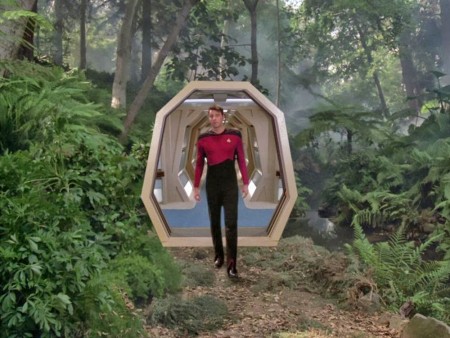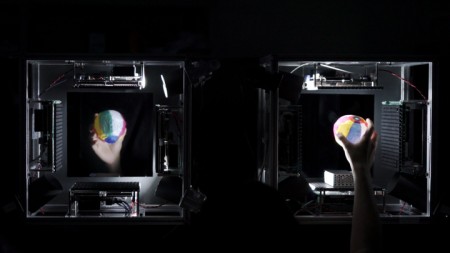January 2, 2016 – In Star Trek’s Next Generation, crew members could take recreational breaks on a holodeck that created numerous virtual adventures. HaptoClone brings us one step closer to making science fiction a science fact.
A product of the Shinoda-Makino Lab at University of Tokyo’s Graduate School of Frontier Sciences, HaptoClone creates telehaptic experiences using ultrasound energy which produces a virtual sensation of touch when interacting with cloned objects.
What is telehaptic? It is a technology that allows for physical interaction between two separated things or people through a feedback system mimicking the real sensation of touch.
The first telehaptic projects were attempted in the mid-1980s. One of them was called the Transatlantic Telephonic Arm Wrestling system. It connected two people by modem and used two electro-mechanical wrestling arms to allow a participant in Canada to virtually arm wrestle with an individual located in Paris. Since then telehaptic systems have allowed for everything from virtual handshakes to virtual kisses. There is even a virtual Hug Shirt.
So what makes what the Shinoda-Makino Lab’s technology different?
What the researchers here have done is produce the next step in virtual reality. It goes beyond allowing two users to interact. Now a user can interact with a cloned virtual object.
How does it work?
The system features two work spaces set apart from each other. The two are virtually superimposed optically and haptically. The light field and force field of each is cloned and forwarded to the other so when a user in one work space sees a clone image of an object existing in the other work space they can touch and manipulate what they see. The system uses concentrated ultrasound to mimic the sensation of touch exerting pressure on the virtual cloned object. This represents the first telehaptic technology allowing for virtual manipulation of cloned objects and it truly is worth watching.










